Less WFH, more Lime, slower buses
What's really going on in London transport?
It’s the most wonderful time of the year for people who like to understand how the capital actually works: the release of Transport for London’s big annual report on the state of the city.
We’ve been digesting its findings and looking for the tiny nuggets that others might miss, celebrating what’s sure to be the biggest talking point shaping politics this week. Because if you can understand the trends in how Londoners are getting around, you can tell where we’re heading as a city.
Bosses are forcing London’s workers back to their offices
The pandemic is receding into the middle distance and office workers are increasingly being asked to start commuting again. Just a third of Londoners now say they are actively encouraged to work from home, indicating a steady decline that is pushing working people back out onto trains, tubes, and bicycles.
The Lime bike takeover of London is doing more than anything else for getting people cycling
Yes, they may break your leg if you fall off at an awkward angle. Yes, they beep (although that seems to have been largely fixed since the summer). Yes, they are run by a largely unaccountable US tech company that’s fighting attempts at regulation. But it’s increasingly clear that the rise of the Lime e-bike is one of the key factors behind the booming number of daily cycle journeys in the capital.TfL estimated that a tenth of the 1.5m daily cycle journeys in the capital are now made using a dockless e-bike, a method of getting around that barely existed before the pandemic. That’s equivalent to around 150,000 journeys a day on vehicles run by Lime and its smaller rivals such as Forest and Voi.
The suspicion within TfL is that, due to issues with survey methodology, the real number of rental e-bike journeys is far higher — although Lime is so secretive it won’t even confirm how many bikes it has on London’s roads.
The groundwork for all of this was laid by more than a decade of investment in cycle lanes, starting under Boris Johnson’s mayorlty and continued under Sadiq Khan, which made people feel safer on the roads. The upgraded Cycleway network is used for a third of cycle journeys even though it only makes up a tiny proportion of potential routes. But there’s no doubt at TfL that rental e-bikes are playing a key role in getting a new group of people on two wheels for the first time and boosting headline cycle journey figures.
Now, a growing problem is what to do about cycle lane congestion on certain key stretches. Just don’t talk about stopping at red lights.The areas with the best access to public transport aren’t all in inner London
This map shows the best-connected public transport areas as dark red — and the worst connected as grey or light blue.
The end result is that outer London areas such as Croydon, Romford and the AI-image hotspot of Kingston upon Thames on major railway lines score particularly highly.
At the same time, as anyone who’s ever tried to get to pale blue inner south east London will know, there are some areas of Zone 2 that are geographically close to the heart of the capital but mysteriously can only be reached by a 90-minute journey on a bus.
Talking of which….London’s buses keep getting slower — and fewer people are taking them
There were 1.84 billion London bus journeys last financial year, which sounds like an unimaginably large number. But that’s down 22% over the last decade. People just aren’t taking the bus as much as they used to.
Attempts to attract people back by making buses faster seem to be failing. Instead, London’s buses are even slower than they were last year, winding through the capital at an average of 9.2 miles per hour — only double the pace of someone going for a brisk walk.
That said, part of the reason for the decline in bus use is the wider issue that…Londoners show no indication they’re ever going to travel as much as they did back in the early 2010s
There has been a long-term decline in terms of how many trips the average Londoner takes in a given day.
London Centric’s in-house theory is that the real start of the decline matches the moment when smartphones went mainstream. Video calling means you don’t have to pop to see your relatives if you want to chat. Online shopping means people don’t go to the shops as much. Plus, the average age of a Londoner is edging upwards and older people don’t tend to spend as much time nipping between multiple parties and jobs.Sadiq Khan probably isn’t going to hit his road safety target
Last year 3,707 people were killed or seriously injured on London’s roads, with more than 80% of them either walking, cycling, or on a motorbike at the time of the incident. Sadiq Khan had set a target to dramatically reduce this number by the end of the decade. But the headline casualty rate on London’s roads, represented by the blue line, is only slightly down compared to when he first became mayor in 2016, bar a brief decline during the pandemic.If he wants to have a chance of hitting his target, the casualty rate needs to be following the red line downwards, sharpish. The target is set for 2030. The mayor’s current term in office ends in 2028.
There is frustration among some within TfL that progress on reducing road deaths can only be made if there’s an active attempt to reduce car traffic on London’s roads. That would almost certainly require charging people by the mile to drive vehicles around the city. Yet that’s not considered possible in the current political environment, as seen when the mayor killed a project to introduce a London-only congestion charging scheme after Labour lost a by-election in Uxbridge.Sadiq Khan probably isn’t going to hit his carbon emission target
The mayor has said he wants London to be carbon net zero by 2030, limiting its contribution to climate change. City Hall’s external advisers concluded that hitting this target will require cutting the number of car journeys made around the capital by a quarter. But that just isn’t happening. Instead, the total number of journeys by car is continuing to edge upwards.
As TfL politely puts it in its annual assessment of the scheme “further action will be required to meet the accelerated 2030 net zero ambition”. Translated from corporate speak, that means “unless there’s a dramatic intervention to convince people to get out of their cars, there’s no way the mayor will hit his greenhouse gas target”.
These are the trade-offs involved in a democracy and there’s a clear difference between Inner London and Outer London regarding public attitudes on this topic.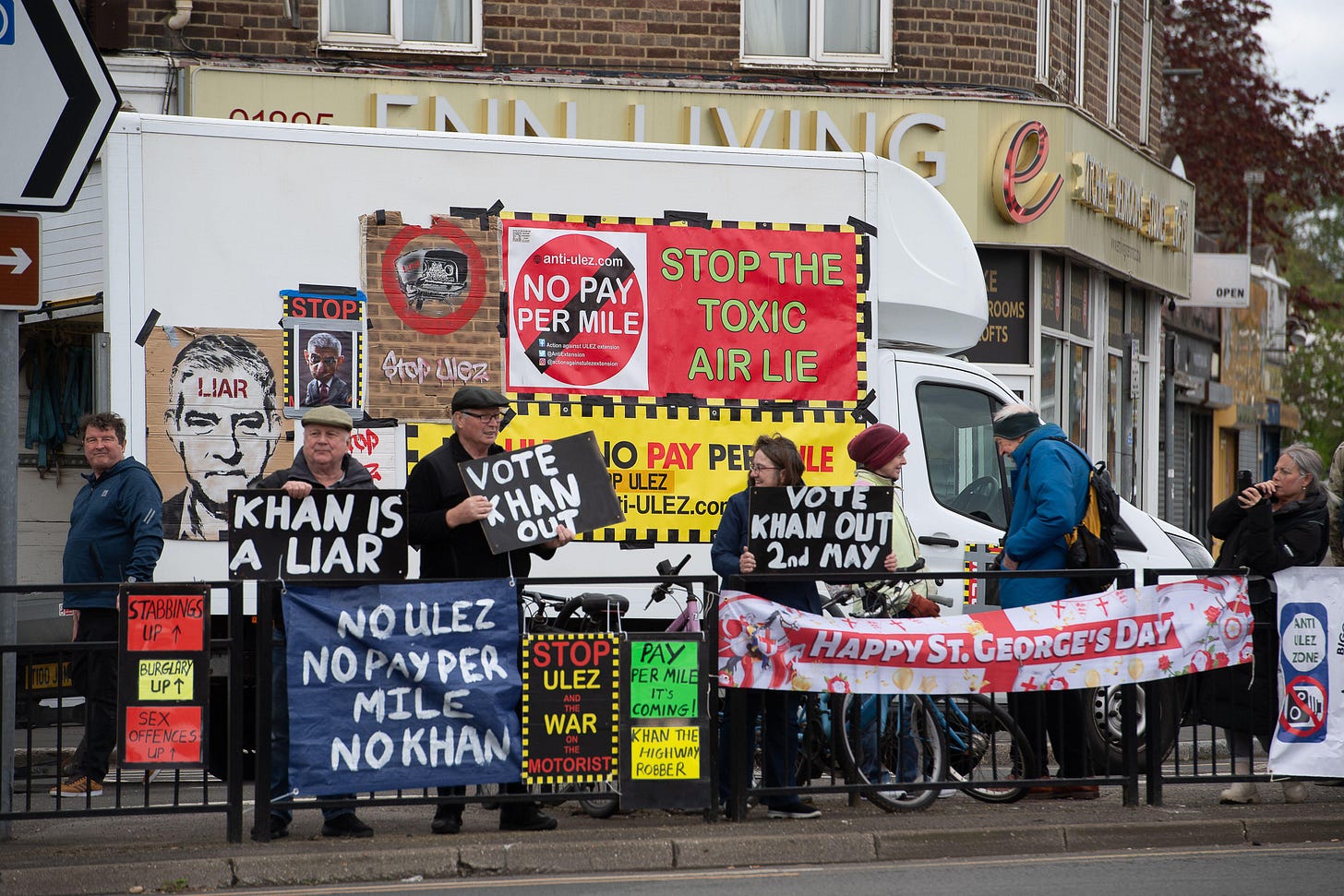
Anti-ULEZ protestors in the Uxbridge constituency, on the western edge of Greater London, during last year’s mayoral election. Still, TfL says carbon dioxide emissions from London road transport have fallen by 13% over the last eleven years. And one thing that is helping is Londoners’ embrace of electric cars. Plug-in vehicles — whether pure electric, or hybrids that still have a back-up petrol engine — now account for a third of all new car sales in London, well above the national average.
Build the Elizabeth line (or pretty much anything new) and they will come
Investing money in building new things, or experimenting by creating new routes, usually leads to people choosing to take public transport. There’s no clearer example than the Elizabeth line, which now carries 800,000 passengers a day through central London. Many of them are choosing to make extra journeys as a result of the line, moving to areas that were previously off-limits, and getting to work faster.
The data also suggests the Elizabeth line has contributed to a collapse in overcrowding on other parts of the network, especially on the Central line. (Let us know in the comments if this checks out in reality.)
There’s a similar story with the new Superloop express bus services and new London Underground and Overground extensions to Battersea Power Station and Barking Riverside. If you get it right, people will use it. You just need someone to put the money in up front.
Now, where’s that Bakerloo line extension?
Thanks to all our subscribers. All of our best stories (including the one that was all over the BBC on Tuesday) come from our community of readers — please do get in touch if you’ve got a tip we should be looking into via WhatsApp or email.
We’re currently working on a series of investigations we can’t wait to tell you about.
Give the gift of London Centric this Christmas
Looking for the Christmas present for the person who has everything? Or at least, do you need a present for the person who would quite like to be able to read our exclusive investigations and support local journalism? If so, why not buy a London Centric gift subscription?
You can time the gift subscription to start on any day you want (eg, 26 December) AND if you drop us an email we’ll also post you a physical festive gift card to hand over on Christmas Day itself, featuring the image above. You might need to explain some of the references featured on it but at least you’ll have something to talk about.



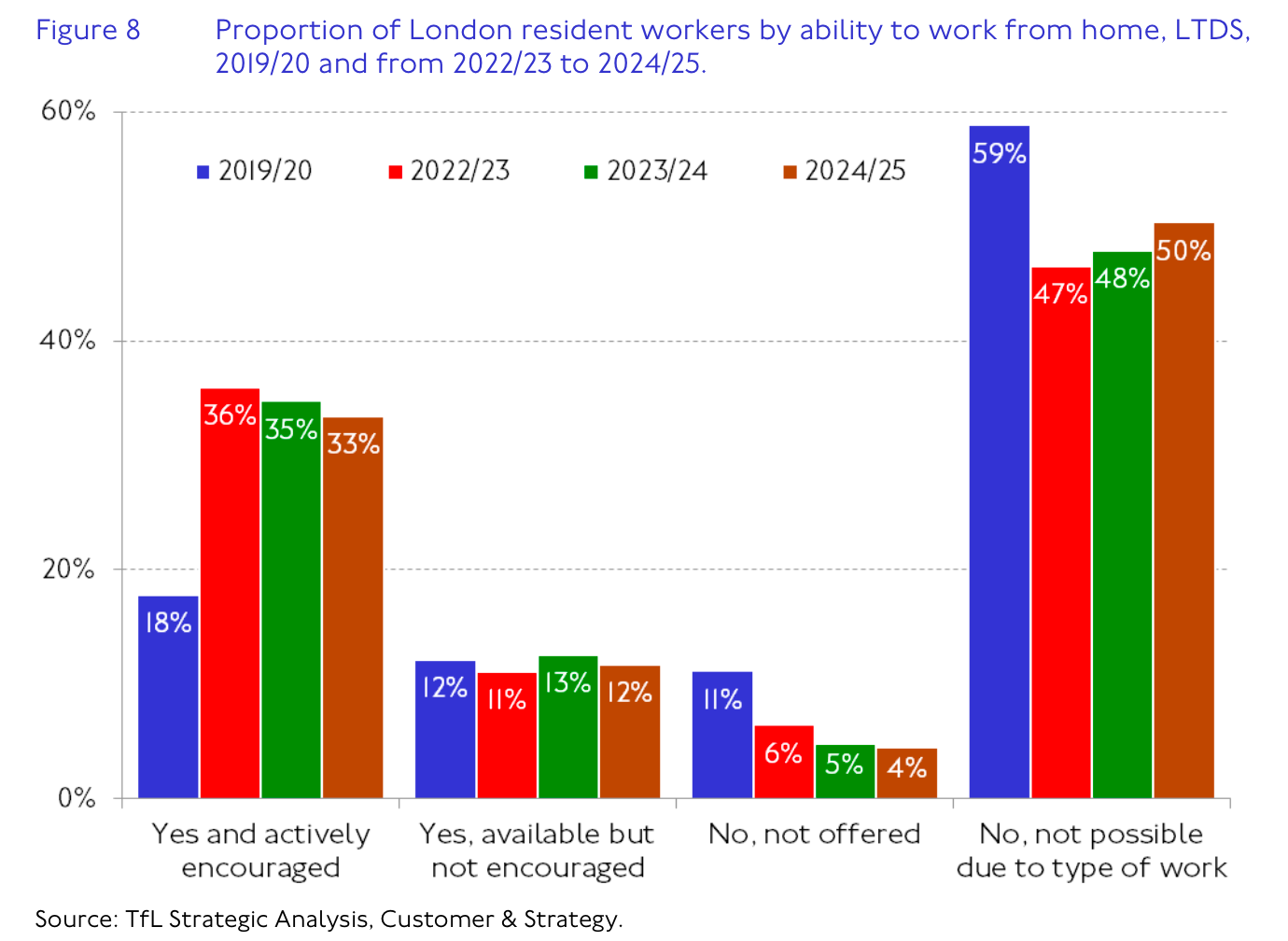
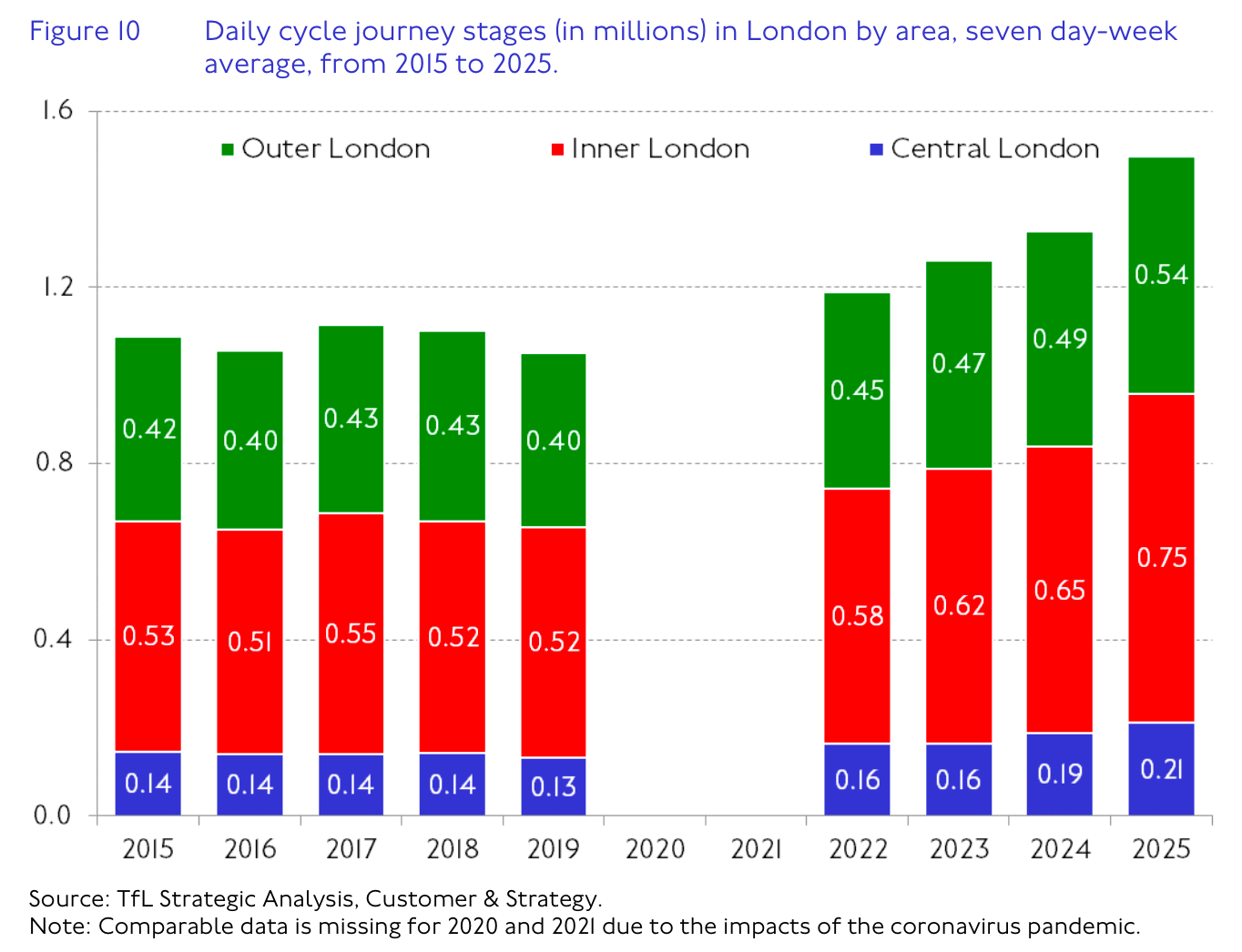
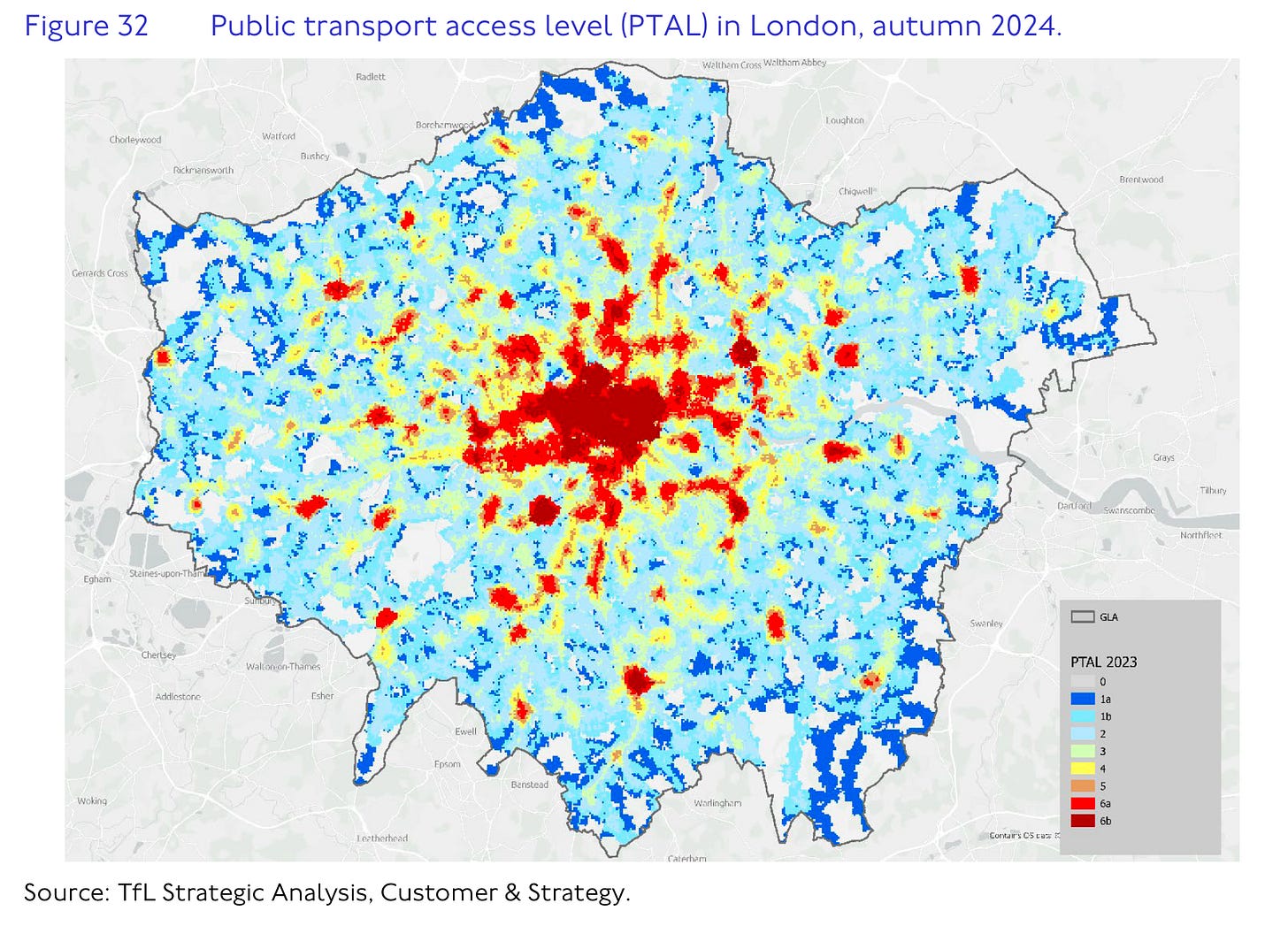
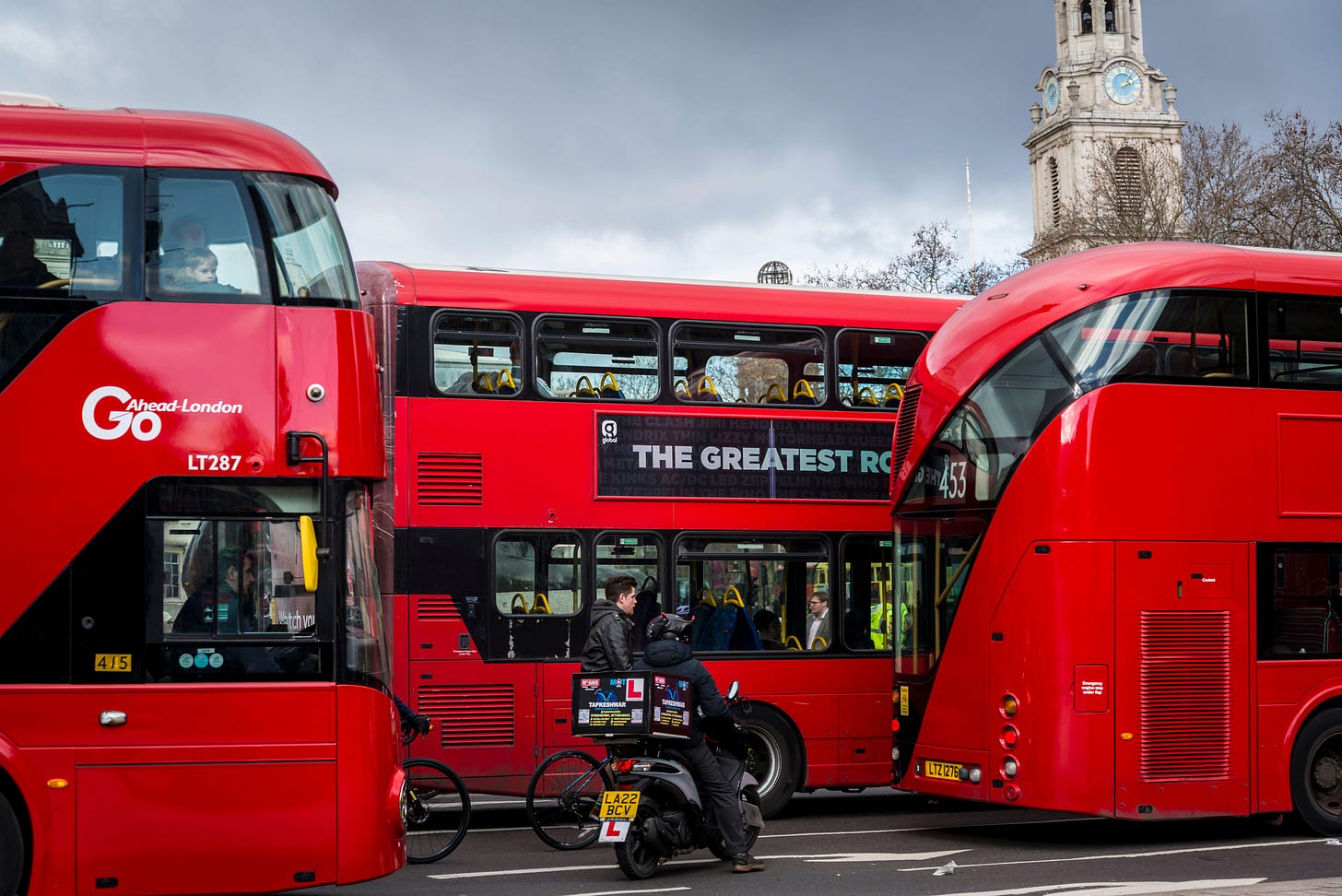
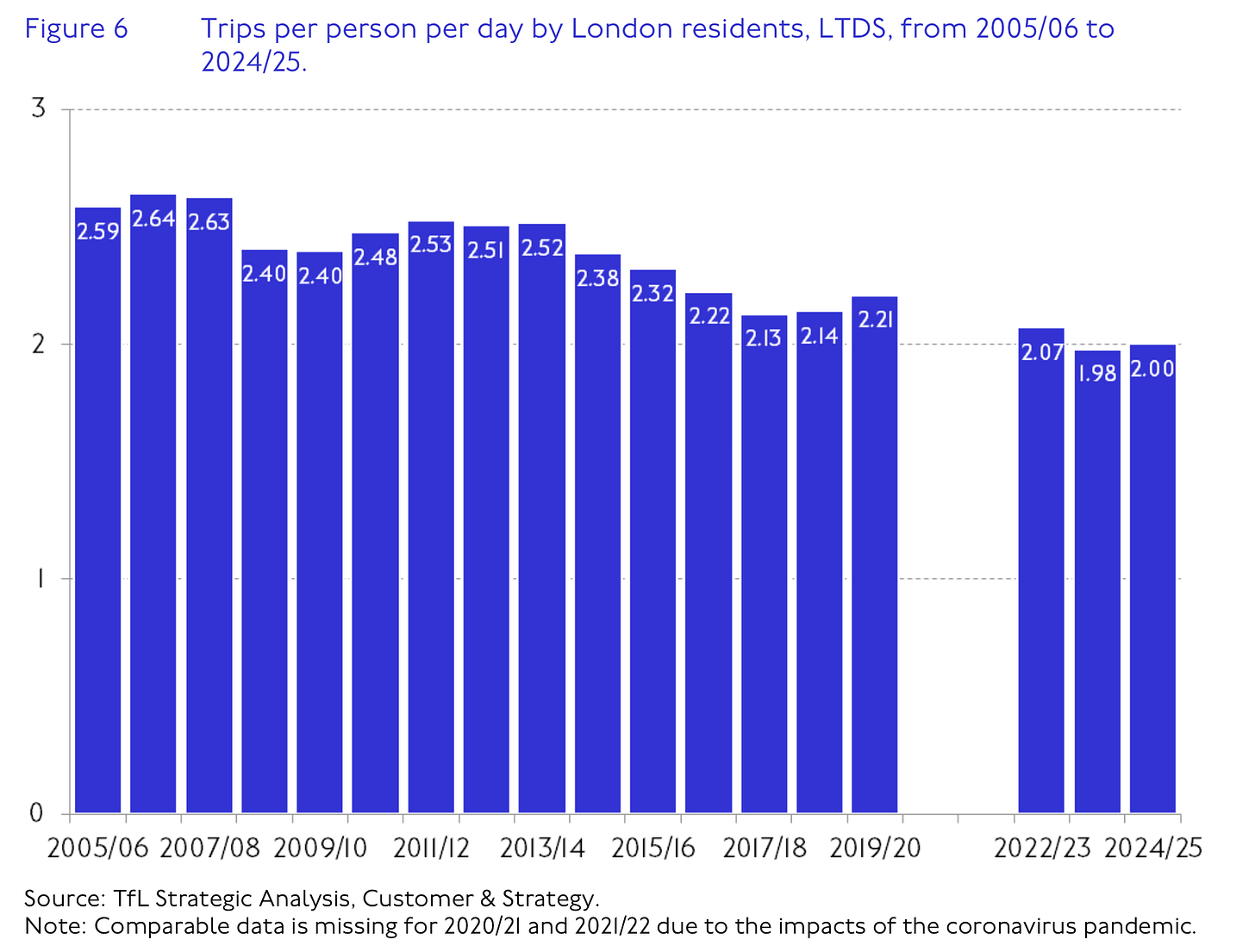

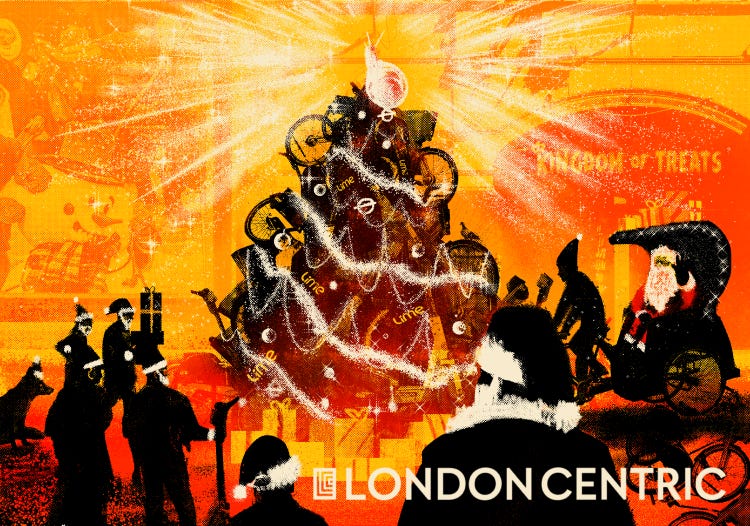
Great analysis of the TFL report - cycling increases to be welcomed. But I am going to talk about red lights - and I think there's a story about cycle infrastructure investment and a total lack of enforcement of how people on bicycles use it. Case in point is Lambeth Bridge - currently undergoing multi-million £s improvement to create dedicated cycling and pedestrian routes. It replaces what were apparently dangerous junctions on both sides of the bridge. I cycle over it daily and less than 5% of fellow cyclists pay any attention to red traffic lights and breeze through, which rather obviates the investment in safety. I guess my point is that carrots in the form of investment to get people on their bikes is good, but with that there needs to be some stick in the form of enforcement to get people using it correctly and safely.
If these things can only be achieved by reducing car journeys, why not ban private cars for the able bodied inside the north circular and tell anyone who complains to get on a bus like a normal person.
Looking at those ULEZ protesters, and my god if you checked their hard drives you’d solve every single cold case sex murder since 1979 in an afternoon, you really would. Bunch of freaks.